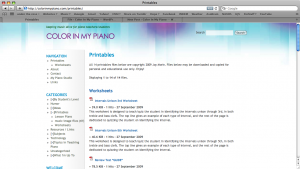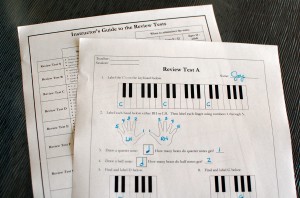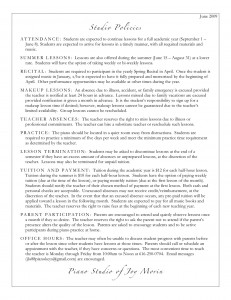I’ve been reading a lot about improvisation (non-jazz, particularly) and creativity in the piano lesson lately, as I’ve been working on a paper for my Into to Music Research class for college. It’s interesting to me how today there seems to be a trend for exact, literal performances of composers’ works. It was not always this way; in the Romantic Era, pianists would freely change composer’s works when they performed them in concert. They would often be completely unrecognizable from the original! But that was what the audience members came to hear: that pianist’s version of Beethoven, Bach, or whatever. Continue reading “Creativity in the Piano Lesson | Part 1 of the series”
Tag: piano
My Favs: Jim Brickman solo piano music
 In a post last week, I mentioned Jim Brickman — composer of new age solo piano music (as well as some pop music with vocals). His music is great to play when you are stressed out and just want to play something relaxing that doesn’t require as much concentration as classical music. =D I thought I’d share some of my favorites among his compositions.
In a post last week, I mentioned Jim Brickman — composer of new age solo piano music (as well as some pop music with vocals). His music is great to play when you are stressed out and just want to play something relaxing that doesn’t require as much concentration as classical music. =D I thought I’d share some of my favorites among his compositions.
I own two books of sheet music by Jim Brickman. I enjoy playing his music at weddings and dinners. It’s perfect for occasions when you need to play something more contemporary and less formal than classical music. It also mixes well with hymn arrangements.
- One of the books I own is: Jim Brickman / Piano Anthology
. This book is a great value for the money. Some of his books of sheet music include pop songs that have vocal lines (such as the popular Christmas song, “The Gift” ). If you want to avoid those and stick to mostly solo piano music, this book is a great option. A couple great pieces included in this book are, “Angel Eyes” and “Rocket to the Moon.”
- My favorite of the two books that I own is: The Songs of Jim Brickman for Easy Piano: Piano Solos
. These selections have been arranged by Dan Coates, and are a little touch easier to play — not to mention they are easier on the hands! Jim Brickman must have large hands, because he likes to include lots of tenths in his LH accompaniment figures. =) So if you have small hands, this book is preferable over his original arrangements. This includes my all-time favorite Jim Brickman tune, “Serenade.”
You can visit his site here, to get more information and hear some recordings. I noticed on his site that he also has available a few books I’ve never seen before, but look very interesting:
- Simply Jim Brickman Songbook — are all arranged by Dan Coates, and appears to be a better value than the one I mentioned above.
- The Best New Wedding Classics — includes many of the same ones I use at weddings — again, a great bang for your buck.
Added: 4 New easy Christmas Arrangements

I know, I know, it’s not even Thanksgiving yet, and I’m already talking about Christmas! But since I’ve been updating my Printables page recently anyway, I went ahead and put up some easy Christmas piano arrangments too:
(See Printables > Sheet Music) These arrangements are suitable for beginner students who are comfortable reading on the staff and playing in the key of C.
Printing Christmas sheet music off the internet is a great alternative to asking students to buy Christmas books — after all, they only get used for about a month or two out of the whole year. Be sure to visit Susan Paradis’ site as well, if you are looking for more Christmas arrangements (click here for a listing of Holiday Music.) Hers are much more attractive than mine, I must admit. I need to learn how to do more with graphics. =]
Have you found other sites where you’ve found Christmas arrangements for students? Please share!
“Printables” page has been updated

If you head over the the Printables page, you will see that it has undergone a complete makeover! I was having a great deal of difficulty with the WordPress plugin I was using to organize and display my printables, so finally I scrapped it totally and found another one. Although it is not as fancy as before (i.e., there are no longer any preview thumbnails of each file), it gets the job done!
The following posts have been updated so that the links to each pdf are now working:
- New Worksheet: Intervals Unison-3rd
- New Worksheet: Intervals Unison-5th
- NEW Printables Added: Review Tests A-J plus a Guide
You can also simply visit the Printables page to see a listing of all the pdfs currently available. Enjoy!
Whisperings: Solo Piano Radio
If you like new age or solo piano music, check out Whisperings: Solo Piano Radio. You can listen to new age / solo piano music for free on their website. It’s a great place to listen to relaxing piano music while checking email or surfing the web. =)
Value of Teaching to Play By Ear
A couple weeks ago, I posted a list of melodies that work well assign piano students to take home and learn to play by ear. Over at ComposeCreate.com, Wendy Stevens talks about the value of teaching students to play by ear during a lecture she gave, Composition for Kids: Time-Saving Ways to Teach Composition in your Studio. (If you haven’t already, you really should check out the entire series of videos she has posted — they contain some very practical ways to encourage and teach composition in the piano lesson.)
Wendy also created a great handout that you can give to your students, to assign them tunes to play by ear, harmonize it, transpose it, and do something creative with it. This handout is available on this post (the link to the actual handout is located just underneath the video). Be sure to check it out!
CATcerto – a modern composition
Perhaps you’ve seen Nora the cat play the piano on YouTube before. Well, the modern composer Mindaugas Piecaitis managed to compose a concerto out of Nora’s movie! Check out the video below.
This composition is a great example of combining modern technology with music – and it’s delightfully humorous to boot! The sky truly is the limit.
For more, check out the BBC article on the subject, or the catcerto.com website.
Music Theory Review Tests A-J plus a Guide
 If you navigate over to the Printables > Worksheets area, you will find some new worksheets listed. This set of Review Tests was originally created for group keyboard classes of various age groups, but they may easily be adapted for other uses. The set is basically a set of progressive worksheets testing in the areas of basic piano skills and music theory. They may work well for group lessons, or just for single students to brush up on their theory skills.
If you navigate over to the Printables > Worksheets area, you will find some new worksheets listed. This set of Review Tests was originally created for group keyboard classes of various age groups, but they may easily be adapted for other uses. The set is basically a set of progressive worksheets testing in the areas of basic piano skills and music theory. They may work well for group lessons, or just for single students to brush up on their theory skills.
- Review Test *GUIDE* — This chart provides the teacher an easy guide for what concepts must be introduced to the student in order for them to successfully complete each Review Test on their own.
Concepts covered in each worksheet:
- Review Test A — finding the keys A – G on the piano; finger numbers; quarter and half notes.
- Review Test B — naming notes on the staff (treble clef: middle C to G; bass clef: F to middle C); whole and dotted half notes; terms & symbols: treble clef, bass clef, staff, barline, double barline, repeat sign, forte, piano.
- Review Test C — C, G major 5FPs (five-finger patterns); terms: slur, staccato, accents; drawing barlines in rhythms in 3/4 and 4/4 time; intervals: unison, 2nd, and 3rd. Continue reading “Music Theory Review Tests A-J plus a Guide”
Playing-By-Ear Activities
Learning to play by ear is one of the most natural ways to develop the ear – and one of the most fun! Below are some lists of familiar tunes you can assign at the lesson for the student to learn to play by ear. I found this valuable information about playing-by-ear activities to assign students in the book, Professional Piano Teaching, by Jeanne Jacobson. I hope you find this information as useful as I did.
What to tell the student:
- Where to begin. Example: “Start with finger 3 on Middle C.”
- The first interval. Example: “The first interval is a fourth.”
- Which keys they will use to play the song. Example: “You will be using the notes A, B, and C.” Continue reading “Playing-By-Ear Activities”
Free Easy Piano Arrangements for Students
Have you ever had a student who has a particular interest for learning familiar tunes? The internet is becoming a wonderful resource for easy piano arrangements – which you can commonly download and print for free. One site in particular that I have turned to frequently for my students is a site called G Music Theory by Gilbert DeBenedetti. His arrangements were perfect for a student I once had who wanted to be able to play some of her favorite songs. So I assigned a few of these “just for fun” pieces for her to learn on her own. It was a big hit – she loved them.
When you visit his site and click on Free Piano Music, you’ll find that he has a large amount of music sorted by difficulty (from Beginning to Intermediate) – including some duet music. What a great resource for those adults or little ones who want to learn to play their favorite tunes!
Be sure to check out the rest of the site – there are a number of music theory worksheets and other resources available as well.
Link: PianoAccompanists.com
Looking for an additional way to earn some money? Would you like to accompany musicians for recitals/rehearsals, but are looking for more ways to get your name out? PianoAccompanists.com makes it easy for musicians in your area for find you. Simply create a login and profile, and then musicians can easily find you by searching by zip code. Check it out!
Example Studio Policies handout
 Here’s a sample of my Studio Policies handout I made during my Piano Pedagogy class at college. (This one is just a sample — the info is not completely accurate to my own current studio policies.) Hope it helps in making your own! Continue reading “Example Studio Policies handout”
Here’s a sample of my Studio Policies handout I made during my Piano Pedagogy class at college. (This one is just a sample — the info is not completely accurate to my own current studio policies.) Hope it helps in making your own! Continue reading “Example Studio Policies handout”







